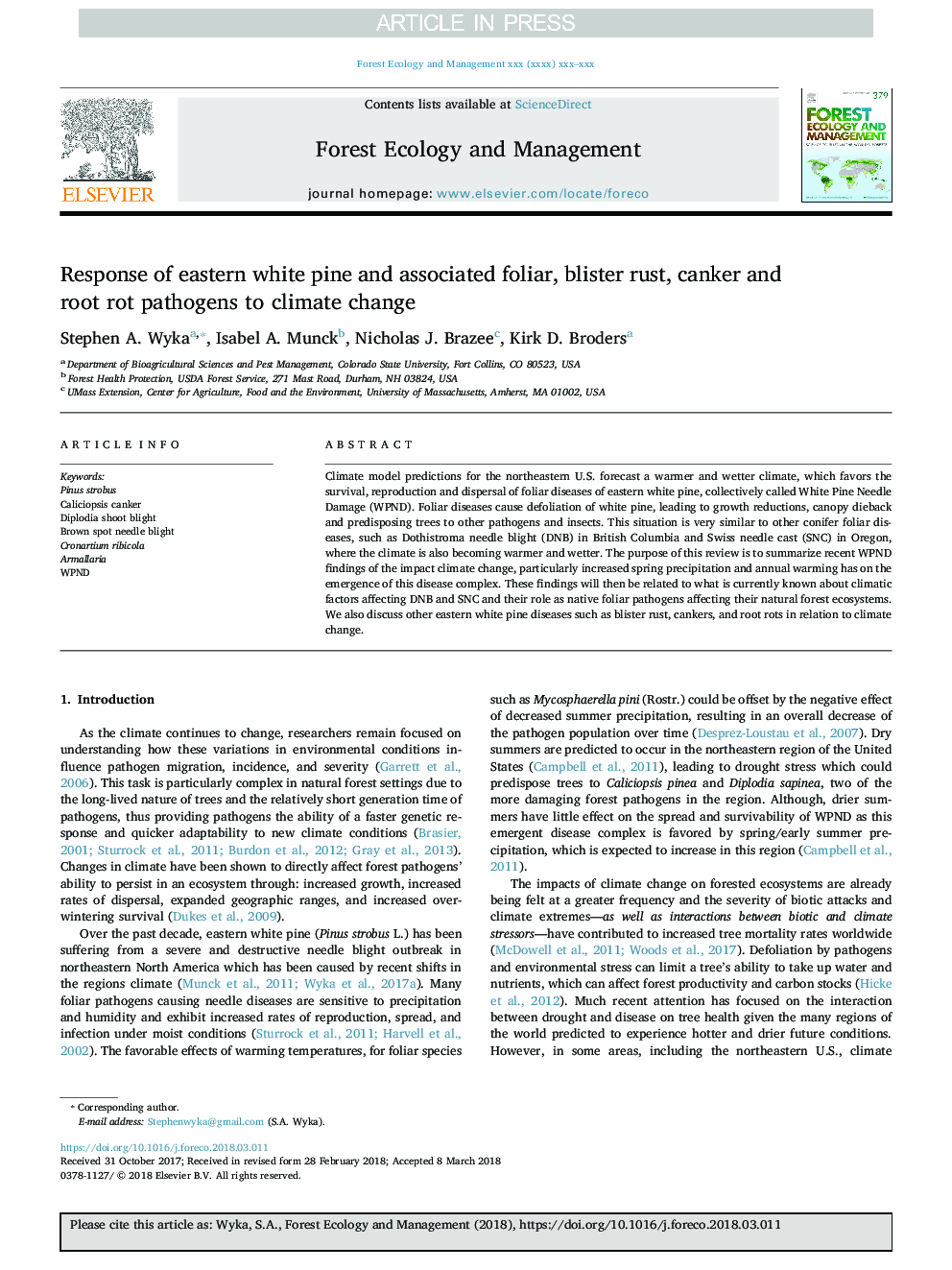| کد مقاله | کد نشریه | سال انتشار | مقاله انگلیسی | نسخه تمام متن |
|---|---|---|---|---|
| 6541632 | 1421337 | 2018 | 9 صفحه PDF | دانلود رایگان |
عنوان انگلیسی مقاله ISI
Response of eastern white pine and associated foliar, blister rust, canker and root rot pathogens to climate change
ترجمه فارسی عنوان
واکنش کاج سفید شرقی و لکه های مرتبط با آن، زنگ زخم تاول زده، کانه و پوسیدگی ریشه به تغییرات آب و هوایی
دانلود مقاله + سفارش ترجمه
دانلود مقاله ISI انگلیسی
رایگان برای ایرانیان
موضوعات مرتبط
علوم زیستی و بیوفناوری
علوم کشاورزی و بیولوژیک
بوم شناسی، تکامل، رفتار و سامانه شناسی
چکیده انگلیسی
Climate model predictions for the northeastern U.S. forecast a warmer and wetter climate, which favors the survival, reproduction and dispersal of foliar diseases of eastern white pine, collectively called White Pine Needle Damage (WPND). Foliar diseases cause defoliation of white pine, leading to growth reductions, canopy dieback and predisposing trees to other pathogens and insects. This situation is very similar to other conifer foliar diseases, such as Dothistroma needle blight (DNB) in British Columbia and Swiss needle cast (SNC) in Oregon, where the climate is also becoming warmer and wetter. The purpose of this review is to summarize recent WPND findings of the impact climate change, particularly increased spring precipitation and annual warming has on the emergence of this disease complex. These findings will then be related to what is currently known about climatic factors affecting DNB and SNC and their role as native foliar pathogens affecting their natural forest ecosystems. We also discuss other eastern white pine diseases such as blister rust, cankers, and root rots in relation to climate change.
ناشر
Database: Elsevier - ScienceDirect (ساینس دایرکت)
Journal: Forest Ecology and Management - Volume 423, 1 September 2018, Pages 18-26
Journal: Forest Ecology and Management - Volume 423, 1 September 2018, Pages 18-26
نویسندگان
Stephen A. Wyka, Isabel A. Munck, Nicholas J. Brazee, Kirk D. Broders,
